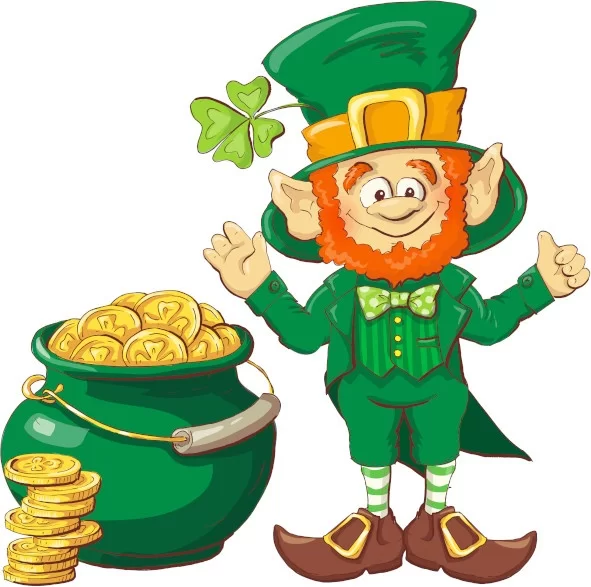
When people hear the phrase “the luck of the Irish,” images of rainbows, pots of gold, and shamrocks often come to mind. But where did this phrase originate? Is it rooted in historical truth or just another cliché? Let’s dive into the fascinating story behind this saying, its cultural context, and its place in Irish heritage.
To uncover more about Ireland’s rich history and traditions, explore Secret Ireland, where legends, landmarks, and lore come alive.
Origins of the Phrase “The Luck of the Irish”
Surprisingly, the phrase didn’t originate in Ireland. It gained popularity in America during the 19th century, particularly during the California Gold Rush (1848–1855). Many Irish immigrants, fleeing famine and oppression, arrived in the United States and sought their fortunes in gold mining. Some struck it rich, leading others to attribute their success to extraordinary luck rather than skill or perseverance.
Over time, this association with Irish prosperity in the gold fields gave rise to the term “the luck of the Irish.” However, some historians argue that the phrase was initially used in a sarcastic or even derogatory manner, implying that Irish success was more a fluke than earned.
Luck in Irish Folklore
Ireland is steeped in folklore that intertwines luck with its mystical landscape and legendary figures. Some of these tales have played a significant role in shaping the idea of Irish “luck”:
1. The Shamrock
The three-leafed shamrock, often associated with Saint Patrick, symbolizes faith, hope, and love. A four-leaf clover, however, is considered particularly lucky because of its rarity. Finding one is said to bring good fortune and ward off bad spirits—a belief that has endured for centuries.
2. The Leprechaun and the Pot of Gold
Leprechauns, the mischievous fairies of Irish folklore, are often associated with wealth and luck. According to legend, they hide their pots of gold at the end of rainbows, granting immense fortune to anyone clever enough to outwit them.
3. Fairy Rings
Fairy rings—circular formations of mushrooms—are found across Ireland’s lush landscapes. While stepping into one is believed to bring bad luck, carefully interacting with these magical sites is said to grant wishes or fortune.
A Deeper Look at Irish Resilience
While folklore portrays Irish luck as mystical or whimsical, the reality is far more profound. For much of its history, Ireland faced significant hardship, from colonization and famine to economic struggles and emigration. The “luck of the Irish” may actually stem from the resilience and resourcefulness of the Irish people in overcoming adversity.
Irish Emigration and Success Stories
Throughout the 19th and 20th centuries, millions of Irish people emigrated to escape poverty and oppression. Despite initial prejudice and discrimination, many achieved success, particularly in America. Figures such as John F. Kennedy, an Irish-American, and great literary icons like James Joyce and Oscar Wilde, demonstrate how the Irish turned the tides of misfortune into triumph.
This resilience may have been misinterpreted as “luck” by those who underestimated the hard work, determination, and wit behind Irish successes.
Is There Something Special About Irish Luck?
Ireland’s stunning landscapes, vibrant culture, and deep-rooted spirituality create an environment where people feel connected to something greater. Whether it’s a sense of mystical energy or simply a cultural attitude of optimism and humor, there’s an undeniable charm to the Irish way of life.
Modern Interpretations of Irish Luck
In modern times, the phrase “the luck of the Irish” is often used playfully, especially around St. Patrick’s Day or when referring to Ireland’s global success in areas like sports, arts, and tourism. However, it’s worth remembering that Irish “luck” often reflects the ability to persevere, adapt, and thrive against the odds.
Ireland and Luck: A Broader Perspective
Famous Irish Symbols of Luck
- The Claddagh Ring: Represents love, loyalty, and friendship, often given as a token of good luck.
- Horseshoes: A tradition brought to life in rural Ireland, believed to ward off evil spirits and attract positive energy.
Irish Customs for Good Fortune
From kissing the Blarney Stone to carrying an acorn for protection, Ireland’s customs are rich with rituals meant to draw in good fortune and protect against bad luck.
Luck Beyond Borders
While “the luck of the Irish” has its roots in Irish culture, the concept of luck transcends national boundaries. Countries like China and Japan have their own symbols of fortune, such as the maneki-neko (beckoning cat) and lucky red envelopes.
Discover the Secrets of Irish Luck
Ireland’s captivating culture and history are more than just legends—they’re a testament to the enduring spirit of its people. Whether it’s the resilience behind the phrase “the luck of the Irish” or the mystical charm of a four-leaf clover, Ireland’s legacy is as rich as its rolling green hills.
To learn more about Ireland’s myths, history, and hidden gems, visit Secret Ireland. Here, you’ll uncover stories that bring this enchanting island to life.
Conclusion
“The luck of the Irish” is a phrase that carries layers of meaning. It evokes images of shamrocks, leprechauns, and folklore but also speaks to the strength, creativity, and resilience of the Irish people. Whether you view it as mystical, metaphorical, or literal, there’s no denying the charm and allure of Irish “luck.”
So next time you hear someone mention “the luck of the Irish,” take a moment to appreciate the deeper story behind the saying. It’s not just about fortune—it’s about forging ahead, no matter what challenges come your way.
Visit Secret Ireland to uncover more about Ireland’s rich heritage and the tales that have shaped its identity.
The Global Appeal of “The Luck of the Irish”
The phrase “the luck of the Irish” resonates far beyond Ireland’s shores, captivating hearts worldwide. Its appeal lies in the romanticized notion of Ireland as a mystical land where luck is woven into the fabric of life. Whether you’re Irish by birth or by spirit, the idea of Irish luck has universal charm.
Irish Diaspora and Cultural Influence
The Irish diaspora, spanning continents, has played a significant role in popularizing this phrase. With over 70 million people worldwide claiming Irish ancestry, the stories, traditions, and folklore of Ireland have become woven into the cultural fabric of nations like the United States, Canada, and Australia.
St. Patrick’s Day celebrations, where the phrase is often humorously invoked, have transformed from religious observances to global festivals of Irish pride and spirit. Events like parades in New York City or Sydney showcase the enduring influence of Irish culture.
The Science of Luck: Is It Real?
Luck might seem abstract, but scientists and psychologists have explored the phenomenon. In many ways, “luck” is a combination of mindset, preparation, and opportunity. Here’s how it ties back to the Irish spirit:
- Optimism and Resilience:
The Irish are known for their sense of humor and ability to find joy even in tough circumstances. This positive outlook can lead to better decision-making and more perceived “luck.” - Social Networks and Support:
Irish communities, both historically and today, emphasize strong social bonds. These networks can provide opportunities that outsiders might see as “lucky.” - Cultural Identity:
Believing in luck can sometimes create it. When people think they’re lucky, they’re more likely to take risks or seize opportunities, increasing their chances of success.
Other Countries with “Lucky” Flags
Ireland isn’t the only country with a tricolor flag featuring green, white, and orange. Several nations share similar flags, though each represents its unique history and values:
1. India
- The Indian tricolor has deep symbolic meaning: orange for courage, white for peace, and green for prosperity. The Ashoka Chakra, a navy-blue wheel in the center, symbolizes justice and progress.
2. Ivory Coast (Côte d’Ivoire)
- This flag features orange, white, and green vertical stripes. Orange represents savannahs, green symbolizes hope and forests, and white stands for peace.
3. Niger
- Niger’s flag also incorporates orange, white, and green. The orange represents the northern Sahara, the green signifies fertile lands in the south, and white stands for purity.
Though these flags share colors with the Irish flag, their meanings are deeply rooted in their respective cultures. Ireland’s tricolor, with green for Catholics, orange for Protestants, and white for peace, stands apart for its emphasis on unity amid division.
Luck as a Source of Irish Pride
For many, “the luck of the Irish” is more than just a phrase—it’s a point of pride. It’s a way to celebrate the ingenuity, warmth, and charm of Irish culture. But it also invites reflection on the resilience and tenacity that underpin the nation’s history.
So, whether you’re exploring fairy lore, looking for four-leaf clovers, or embracing a spirit of optimism, remember that Irish luck is as much about mindset as it is about magic.
For more stories, secrets, and traditions of Ireland, visit Secret Ireland. Let the legends inspire your own journey of discovery!


